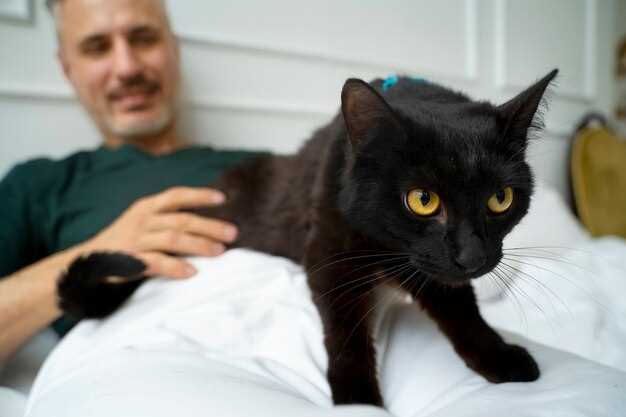
Are you concerned about the potential side effects of mirtazapine in your feline friend?
Mirtazapine is commonly prescribed to cats to stimulate their appetite and help manage certain behavioral disorders. However, it is important to be aware of the possible side effects that may arise.
Overview of mirtazapine
Mirtazapine is a medication commonly used in veterinary medicine to treat various conditions in cats, including appetite stimulation and management of anxiety and depression.
It belongs to a class of medications known as noradrenergic and specific serotonergic antidepressants (NaSSA), which work by increasing the levels of certain neurotransmitters in the brain, such as serotonin and norepinephrine.
Benefits

Mirtazapine offers several benefits when used to ease cat anxiety:
- It helps to reduce stress and promote relaxation in cats.
- It can increase appetite in cats that are not eating properly due to anxiety or illness.
- It may improve overall mood and behavior by calming the cat’s nerves.
- It is easy to administer and can be given orally, making it a convenient option for pet owners.
Easing cat anxiety
Cats can experience anxiety for various reasons, such as changes in their environment, loud noises, or separation from their owners. Mirtazapine has been shown to help ease cat anxiety by affecting certain neurotransmitters in the brain that regulate mood and emotions.
| Benefits | Mirtazapine can help reduce anxiety in cats, making them feel more calm and relaxed. |
| Side Effects | While mirtazapine is generally well-tolerated, some cats may experience mild side effects such as drowsiness or increased appetite. |
| Usage | Mirtazapine is typically given as a once-daily oral medication and should be administered as directed by a veterinarian. |
If you notice any unusual or concerning symptoms in your cat while using mirtazapine, contact your veterinarian for guidance and support.
Side Effects
When using mirtazapine for cats, there are some potential side effects to be aware of. While this medication can be effective in treating anxiety and other issues, it can also cause some adverse reactions in cats. Common side effects may include:
| 1. Drowsiness | 2. Increased appetite |
| 3. Restlessness | 4. Vomiting |
It is important to monitor your cat closely while they are on mirtazapine and report any unusual symptoms or behaviors to your veterinarian. In some cases, these side effects may diminish over time as your cat adjusts to the medication. However, if you notice any severe or persistent side effects, be sure to seek medical attention for your cat immediately. Always follow the dosing instructions provided by your veterinarian to minimize the risk of side effects.
Potential for drowsiness
When giving your cat mirtazapine, it’s important to be aware of the potential for drowsiness as a side effect. Some cats may experience increased sleepiness or lethargy after taking mirtazapine, especially when starting the medication or when the dosage is increased.
It’s essential to monitor your cat closely for any signs of excessive drowsiness or sedation. If you notice that your cat is unusually sleepy or sluggish, consult your veterinarian immediately. They may recommend adjusting the dosage or discontinuing the medication if necessary.
Key Points to Remember:

- Monitor your cat for signs of drowsiness after administering mirtazapine.
- Consult your veterinarian if you notice excessive sleepiness or lethargy in your cat.
- Follow dosing instructions carefully to minimize the risk of drowsiness.
Usage
It is important to follow the prescribed dosing instructions for mirtazapine for cats. The medication should be given orally as directed by your veterinarian. It is typically administered once a day to help manage your cat’s symptoms. It is essential to provide the medication at the same time each day to maintain a consistent level in your cat’s system. Do not change the dosage or stop the medication without consulting your veterinarian. If you have any questions about how to administer mirtazapine to your cat, be sure to ask your veterinarian for guidance.
Proper dosing instructions
When administering mirtazapine to your cat, it is important to follow the dosage instructions provided by your veterinarian carefully. The typical dose for cats is 1.88 mg (1/4 tablet) per cat once daily. The medication can be given with or without food, but it is important to ensure that your cat consumes all of the medication provided. Do not crush or break the tablets, as this may alter the effectiveness of the medication.
It is crucial to monitor your cat’s response to the medication and consult your veterinarian if you have any concerns or notice any unusual changes in your cat’s behavior. Your veterinarian may adjust the dosage based on your cat’s individual needs, so it is essential to keep them informed of any changes in your cat’s condition.
Risks
It’s essential to be aware of the potential risks associated with using mirtazapine for cats. While this medication can be highly effective in treating conditions such as appetite loss and anxiety in cats, there are some risks to consider.
- Side Effects: Mirtazapine can cause side effects in cats, including lethargy, increased heart rate, and changes in behavior. It’s crucial to monitor your cat closely for any adverse reactions.
- Drug Interactions: Mirtazapine can interact with other medications your cat may be taking, leading to potential complications. Always consult your veterinarian before starting mirtazapine if your cat is on other medications.
- Overdose: In some cases, overdosing on mirtazapine can occur, leading to severe symptoms such as tremors, seizures, and even coma. It’s vital to follow dosing instructions carefully and store the medication securely out of reach of pets.
- Monitoring: Regular monitoring of your cat’s response to mirtazapine is essential to assess its effectiveness and adjust the dosage if needed. Your veterinarian can provide guidance on how to track your cat’s progress.
Overall, while mirtazapine can be a valuable tool in managing certain conditions in cats, understanding and mitigating the risks associated with its use is crucial for ensuring the health and well-being of your feline companion.
